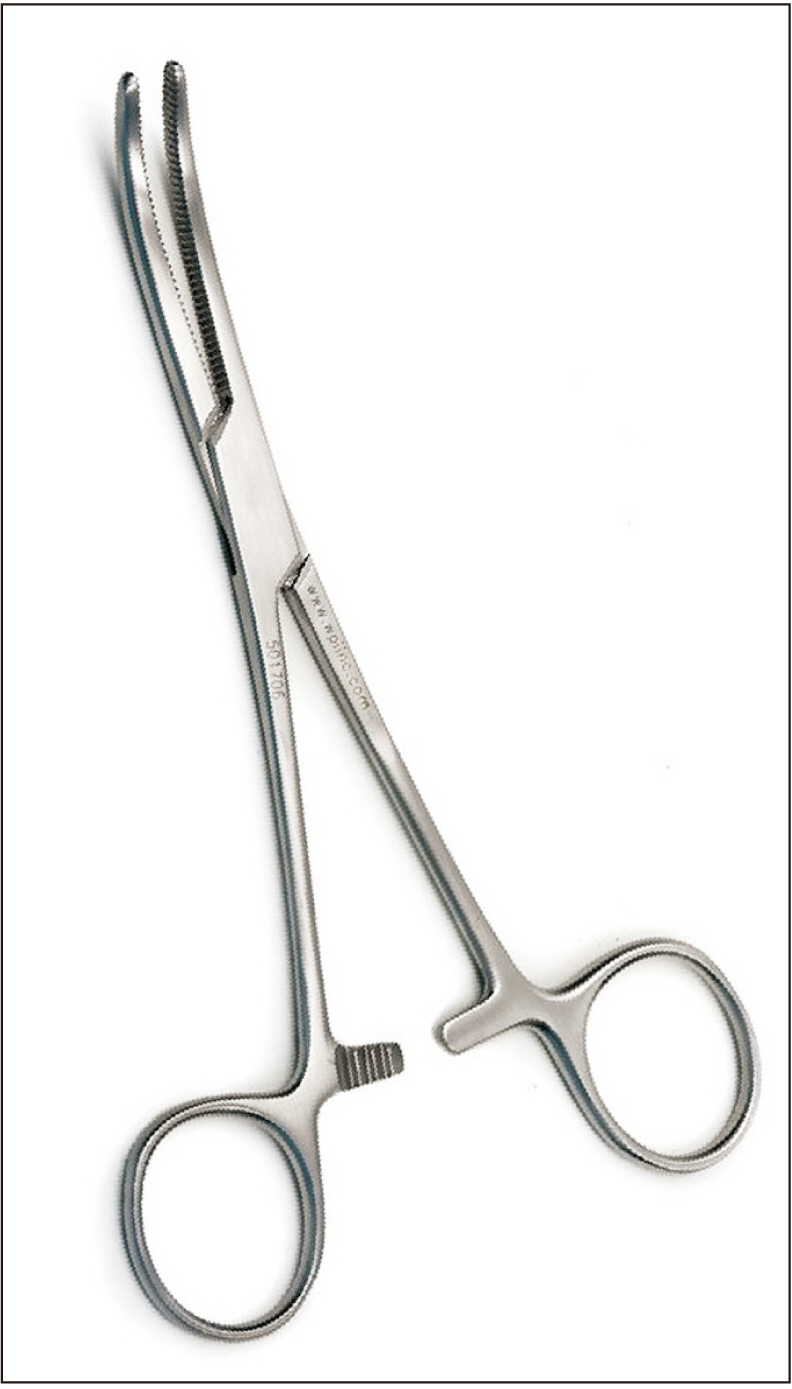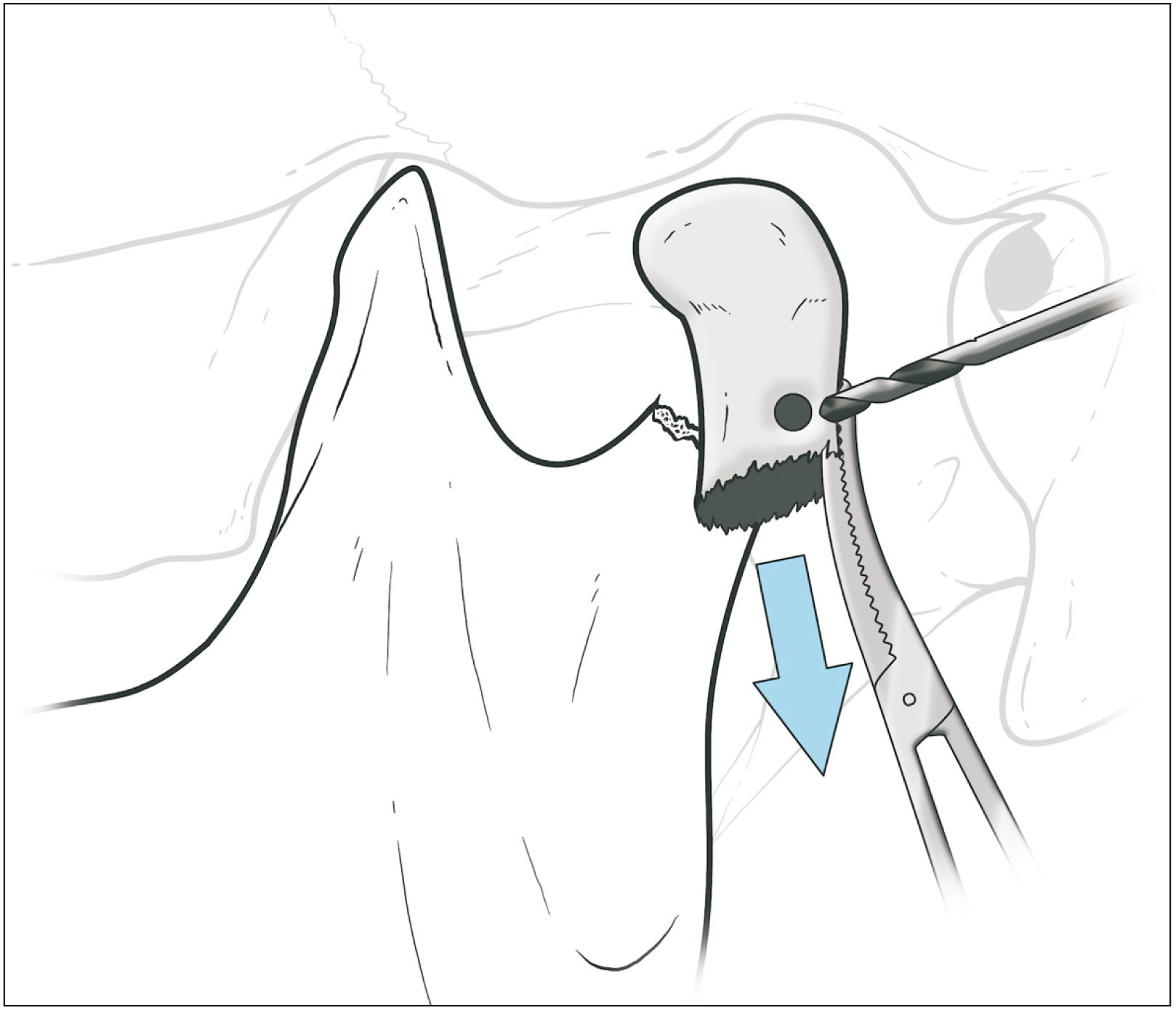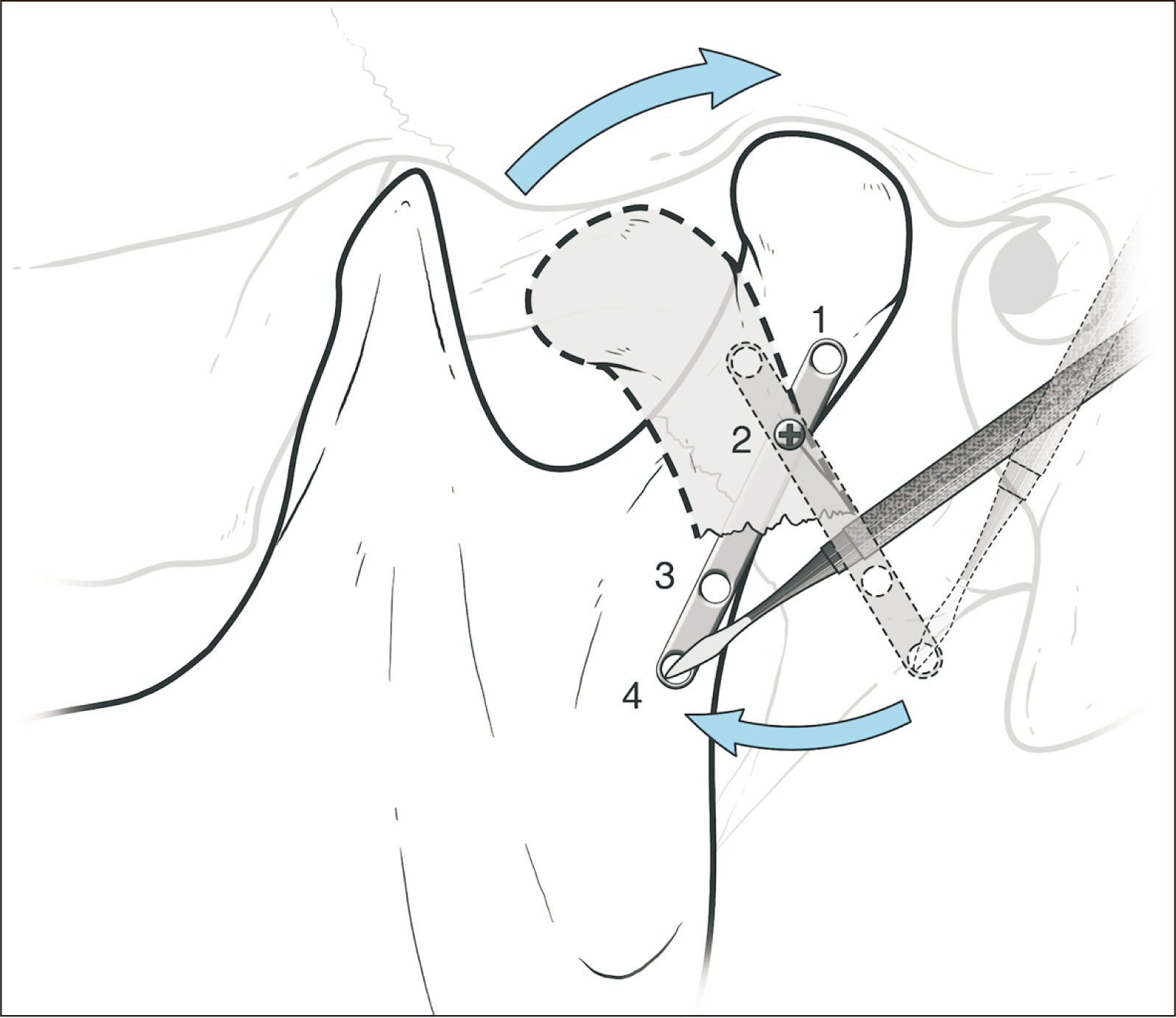J Korean Assoc Oral Maxillofac Surg.
2021 Oct;47(5):403-406. 10.5125/jkaoms.2021.47.5.403.
New protocol for simplified reduction and fixation of subcondylar fractures of the mandible: a technical note
- Affiliations
-
- 1Department of Oral and Maxillofacial Surgery, Goa Dental College and Hospital, Bambolim, India
- KMID: 2521799
- DOI: http://doi.org/10.5125/jkaoms.2021.47.5.403
Abstract
- The dilemma regarding the management of condylar fractures generally revolves around the surgical approach, implant design, and the surgeon’s experience. Zide and Kent’s guidelines streamlined the decision making process for condylar fractures. However, there exists no standardized protocol for reduction and fixation of condylar fractures. Here, we have described a detailed and stepwise protocol, common to any surgical approach, that would lead to predictable, reproducible, and repeatable results in every surgeon’s hands.
Figure
Reference
-
References
1. Zide MF, Kent JN. 1983; Indications for open reduction of mandibular condyle fractures. J Oral Maxillofac Surg. 41:89–98. https://doi.org/10.1016/0278-2391(83)90214-8 . DOI: 10.1016/0278-2391(83)90214-8. PMID: 6571887.
Article2. Kamel GN, De Ruiter BJ, Baghdasarian D, Mostafa E, Levin A, Davidson EH. 2019; Establishing a protocol for closed treatment of mandibular condyle fractures with dynamic elastic therapy. Plast Reconstr Surg Glob Open. 7:e2506. https://doi.org/10.1097/GOX.0000000000002506 . DOI: 10.1097/GOX.0000000000002506. PMID: 32537286. PMCID: PMC7288876.
Article3. Loukota RA, Eckelt U, De Bont L, Rasse M. 2005; Subclassification of fractures of the condylar process of the mandible. Br J Oral Maxillofac Surg. 43:72–3. https://doi.org/10.1016/j.bjoms.2004.08.018 . DOI: 10.1016/j.bjoms.2004.08.018. PMID: 15620780.
Article4. Orabona GD, Abbate V, D'Amato S, Romano A, Iaconetta G. 2014; Surgical sequence of reduction in double mandibular fractures treatment. Ann Ital Chir. 85:207–13. PMID: 25073686.5. Peterson EC, Nguyen DC, Baughman EJ, Skolnick GB, Chi JJ, Patel KB. 2020; Algorithm for management of mandibular condylar base fractures. Plast Reconstr Surg Glob Open. 8:e3145. https://doi.org/10.1097/GOX.0000000000003145 . DOI: 10.1097/GOX.0000000000003145. PMID: 33133982. PMCID: PMC7544252.
Article6. Bindra S, Choudhary K, Sharma P, Sheorain A, Sharma CB. 2010; Management of mandibular sub condylar and condylar fractures using retromandibular approach and assessment of associated surgical complications. J Maxillofac Oral Surg. 9:355–62. https://doi.org/10.1007/s12663-010-0133-5 . DOI: 10.1007/s12663-010-0133-5. PMID: 22190824. PMCID: PMC3177485.
Article7. Kanno T, Sukegawa S, Fujioka M, Takabatake K, Furuki Y. 2011; Transoral open reduction with rigid internal fixation for subcondylar fractures of the mandible using a small angulated screwdriver system: is endoscopic assistance necessary? J Oral Maxillofac Surg. 69:e372–84. https://doi.org/10.1016/j.joms.2011.02.040 . DOI: 10.1016/j.joms.2011.02.040. PMID: 21684653.
Article8. Choi BH, Yi CK, Yoo JH. 2001; Clinical evaluation of 3 types of plate osteosynthesis for fixation of condylar neck fractures. J Oral Maxillofac Surg. 59:734–7. discussion 738. https://doi.org/10.1053/joms.2001.24283 . DOI: 10.1053/joms.2001.24283. PMID: 11429730.
Article9. Rozeboom A, Dubois L, Bos R, Spijker R, de Lange J. 2017; Open treatment of unilateral mandibular condyle fractures in adults: a systematic review. Int J Oral Maxillofac Surg. 46:1257–66. https://doi.org/10.1016/j.ijom.2017.06.018 . DOI: 10.1016/j.ijom.2017.06.018. PMID: 28732561.
Article10. Kim SY, Ryu JY, Cho JY, Kim HM. 2014; Outcomes of open versus closed treatment in the management of mandibular subcondylar fractures. J Korean Assoc Oral Maxillofac Surg. 40:297–300. https://doi.org/10.5125/jkaoms.2014.40.6.297 . DOI: 10.5125/jkaoms.2014.40.6.297. PMID: 25551095. PMCID: PMC4279978.
Article11. Meyer C, Serhir L, Boutemi P. 2006; Experimental evaluation of three osteosynthesis devices used for stabilizing condylar fractures of the mandible. J Craniomaxillofac Surg. 34:173–81. https://doi.org/10.1016/j.jcms.2005.09.005 . DOI: 10.1016/j.jcms.2005.09.005. PMID: 16537107.
Article12. Meyer C, Kahn JL, Boutemi P, Wilk A. 2002; Photoelastic analysis of bone deformation in the region of the mandibular condyle during mastication. J Craniomaxillofac Surg. 30:160–9. https://doi.org/10.1054/jcms.2002.0297 . DOI: 10.1054/jcms.2002.0297. PMID: 12220995.
Article13. Choi BH, Kim KN, Kim HJ, Kim MK. 1999; Evaluation of condylar neck fracture plating techniques. J Craniomaxillofac Surg. 27:109–12. https://doi.org/10.1016/s1010-5182(99)80023-7 . DOI: 10.1016/s1010-5182(99)80023-7. PMID: 10342148.
Article14. Crowley M, Siddiqui A, Burke E. 2017; Surgical management of condylar fracture: a trainee friendly approach. Br J Oral Maxillofac Surg. 55:E132. https://doi.org/10.1016/j.bjoms.2017.08.136 . DOI: 10.1016/j.bjoms.2017.08.136.
Article
- Full Text Links
- Actions
-
Cited
- CITED
-
- Close
- Share
- Similar articles
-
- Clinical Applications of Endoscopic-Assisted Open Reduction and Internal Fixation of Subcondylar Fractures
- Surgical Management of a Mandible Subcondylar Fracture
- Transmasseteric Approach for Open Reduction and Internal Fixation of Mandible Subcondylar Fracture
- Intraoral Open Reduction of Mandibular Subcondylar Fractures using Kirschner Wire
- Comparison Study of Open Reduction and Closed Reduction in Treatment of Mandibular Subcondylar Fractures




